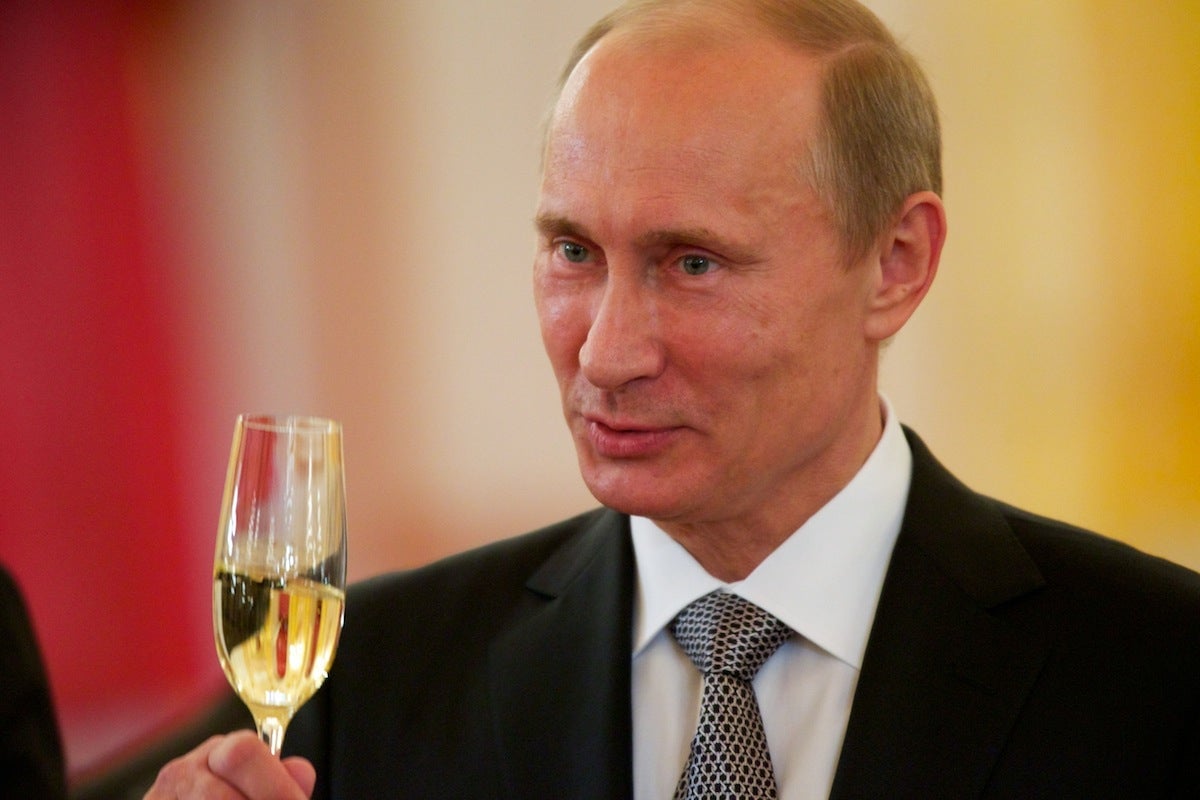Why a drop in oil prices wouldn’t threaten Vladimir Putin any time soon
MOSCOW—When, like Vladimir Putin, you’re the leader of a petro-state, the putative threats to your rule are many. One of the most menacing, especially since the Arab Spring, is an economic statistic known as the break-even point. It’s the price of oil required to balance your national budget. If oil prices aren’t high enough, you can lack the means to cover typically generous state-paid social goodies, and can abruptly lose your people’s favor. An ouster can soon follow.

MOSCOW—When, like Vladimir Putin, you’re the leader of a petro-state, the putative threats to your rule are many. One of the most menacing, especially since the Arab Spring, is an economic statistic known as the break-even point. It’s the price of oil required to balance your national budget. If oil prices aren’t high enough, you can lack the means to cover typically generous state-paid social goodies, and can abruptly lose your people’s favor. An ouster can soon follow.
The devilish break-even threat has been especially troubling in the case of Putin, who reassumed the Russian presidency in May. In order to pay the state’s bills without going into deficit, Russia must fetch $115 for every one of its 5 million barrels a day in exports, according to the Russian finance ministry. In the West, it’s thought that Russia’s number is more like $117 a barrel. Whichever it is, though oil is right now at around $115, it has spent most of 2012 below both thresholds, leading some to question Putin’s longevity.
But are Russians worrying too much? Possibly so, if you go by the calculations of Yevgeny Gavrilenkov, chief economist for Troika Dialog Bank, who says that low oil prices are less of a problem for Putin, and Russia as a whole, than is supposed.
On Oct. 14, Gavrilenkov stood before the World Economic Forum in Moscow and quietly challenged the conventional wisdom about the break-even threat. He mentioned a formula that explained everything. No one seemed to listen. Gavrilenkov sat down. I caught up with him during a break, and he jotted down as much of his theory as he could manage on the event program before the next session began. (Gavrilenkov also explained the idea a bit in an article published in March.)
It’s fairly simple, he said. The break-even theory used to hold for Russia. That was because Russia used to peg the ruble strictly to the dollar. So, since oil is denominated in dollars, Russia’s oil export proceeds went up or down in direct proportion to the price of a barrel.
But in 2009 Russia let the ruble float. A floating ruble depreciates when the oil price falls. “If oil goes down by 30%, the ruble drops by about 20%, more or less,” Gavrilenkov told me. And if the ruble drops by 20%, each oil dollar buys 20% more rubles, which means more in the budget for all that social spending. So a knock-on effect of the oil price falling is that Russia’s break-even oil price falls too.
Gavrilenkov’s formula starts, therefore, with the assumption rather than a 1:1 relationship between oil and the ruble, it’s more like 1:0.7. Then he adds in the fact that oil and gas (Russian sells its gas using a formula tied to oil prices) exports pay half the state budget. So, he says, “at $80 a barrel, break-even is $93-$95. That’s a manageable number. It’s certainly not catastrophic.” The last time oil was as low as $80 a barrel was two years ago.